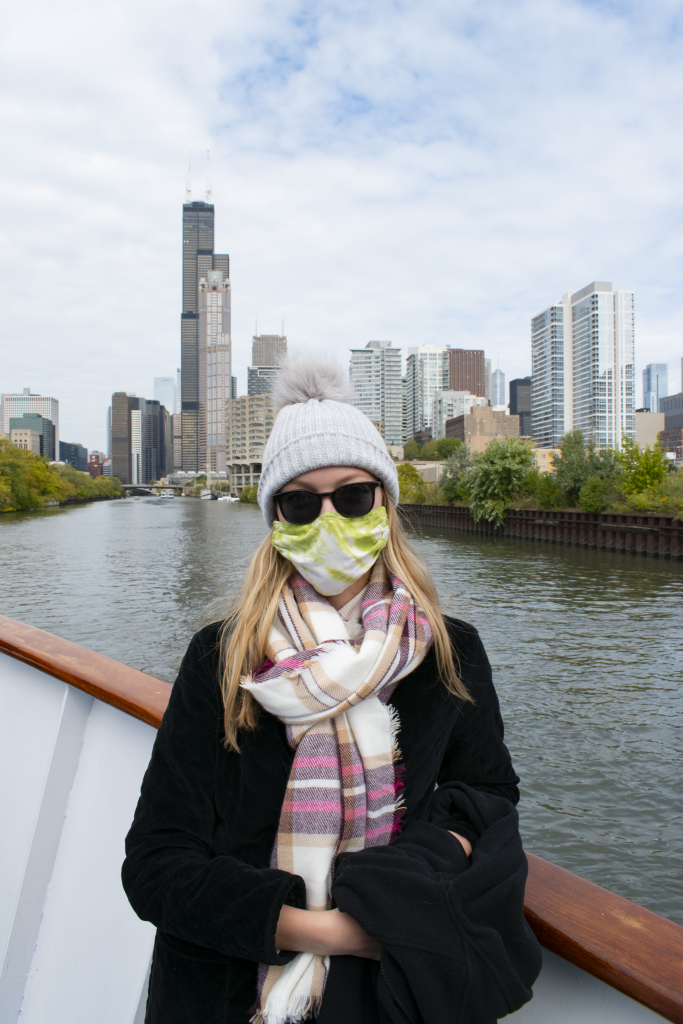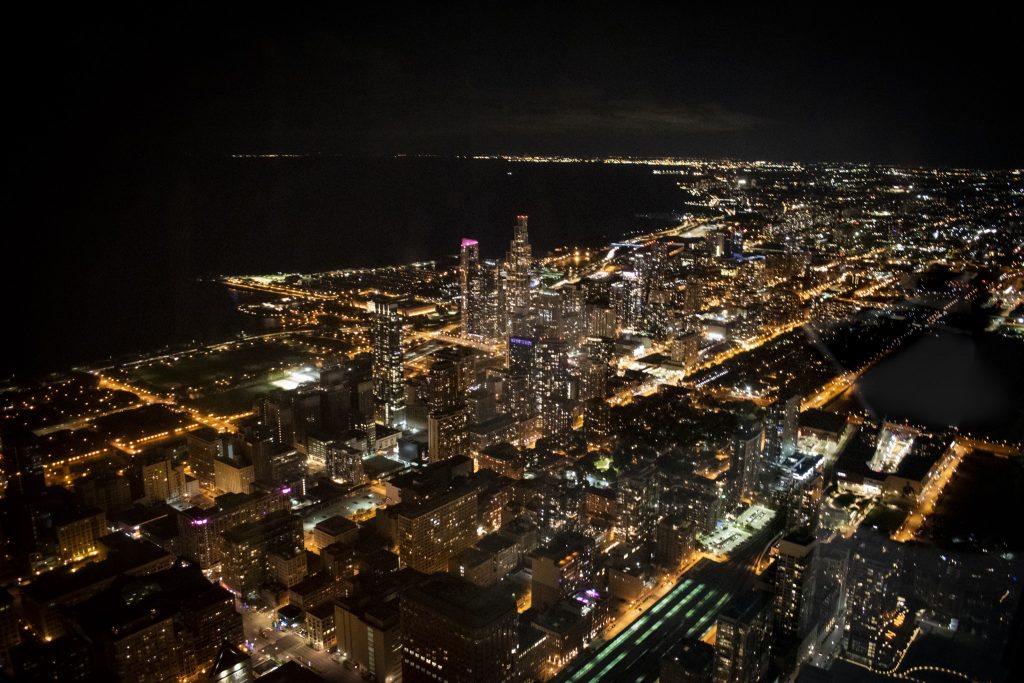Pictured Above: The Crow’s Nest Arts & Life Editor Annalise Anderson traveled to Chicago last week. The city’s iconic sculpture known as “The Bean” was gated off and sparsely crowded due to COVID-19 precautions.
Annalise Anderson | The Crow’s Nest
By Annalise Anderson

Courtesy of Douglas Cox
Just as I never thought that the word “pandemic” would be a regular part of my working vocabulary, I never thought I would have to consider the ethics of indulging in a vacation.
Traveling feels like it’s become a sort of taboo amid COVID-19. Travel plans are made in secret, flights are reluctantly booked and excitement feels like it can only be shared with an equitable sense of guilt.
I have had to cancel multiple trips since COVID-19 changed our world and I know I am not alone in feeling stir crazy.
Classmates, professors and colleagues have been caught red-handed in their fall semester travels – some admitting to being out of state and others attempting to hide the obvious hotel room backdrop during Microsoft Teams meetings.
When the opportunity for a trip to Chicago presented itself, rather than immediately rearranging my schedule, my boyfriend and I took pause before googling round-trip flights.
The Centers for Disease Control (CDC) website states, “Most viruses and other germs do not spread easily on flights because of how air circulates and is filtered on airplanes.” It also states that social distancing can be difficult on a crowded flight which “may increase your risk of getting COVID-19.”
Do we dare succumb ourselves to the risks of traveling and the inevitable judgement from peers for the sake of visiting family and maintaining our sanity?
After thoughtful deliberation, we booked our flights.
The afternoon of Sept. 30, we arrived at a sparsely crowded Tampa International Airport. I was feeling a bit more secure in our decision.
Then we boarded the plane.
There was no sign of occupancy restrictions as we shuffled down the aisle to our seats.
While the airline enforced face coverings during boarding, passengers were permitted to remove them when eating or drinking.
Less than 10 minutes into the flight, the family reunion occupying the rows surrounding ours began munching on snacks like they were squirrels preparing for winter. Last I checked, it was a two-hour flight. Did they know something I didn’t?
We were relieved to land in Chicago.
The city has moved into phase IV of its COVID-19 reopening plan, which outlines expectations for businesses as they gradually resume normal operations, sustains closure of lakefront attractions and requires businesses to report virus outbreaks to the Chicago Department of Public Health.
Chicagoans seemed surprisingly compliant. It was hard to spot a mask-less person in the city. Attractions and businesses had strict guidelines in place and hand sanitizer was everywhere.
Artist Sir Anish Kapoor’s “Cloud Gate” – affectionately known as “The Bean” – is the iconic mirrored sculpture that sits just outside the city’s edge in Millennium Park. Typically, visitors are free to touch and walk under the large, orbicular shape. Instead, the attraction was gated off, forcing on-lookers to admire the installation from several yards away.
Even 1,353 feet in the air, the Willis Tower Skydeck had abundant signage and cleaning crews. The massive elevators that rush visitors to the 103rd floor operated on a limited capacity while people waited patiently in a socially distanced queue.

Annalise Anderson | The Crow’s Nest
Many restaurants, including our choice for deep-dish pizza, enforced face coverings and restricted dining times for customers. One of our stops allowed its customers to occupy a table for only 60 minutes before asking them to leave in order to make room for other hungry guests.
A late-night cocktail bar and jazz lounge known for its early connections to Chicago mobsters prompted not only a cover charge, but also a temperature check, ID verification and a phone number for “contact tracing” purposes, according to the bouncer.
Despite the necessary modifications that came with traveling, I have no regrets about safely indulging myself.
After the five-day trip, we returned home to our tiny St. Petersburg apartment. Rather than feeling bitter about my vacation coming to an end, I felt an overwhelming sense of relief.
We are navigating an unfamiliar world and the joy of travel, new experiences and positive memories provided a respite that I had been craving since March.
So, for those who yearn for a change of scene, I understand. But please travel safely.
Students considering travel plans should review COVID-19 public transit regulations, be aware of a city’s safety mandates and understand the risk and responsibility that comes with traveling during this time.
If traveling, the CDC suggests wearing a mask, social distancing, frequent handwashing, avoiding anyone who is sick and not touching your face.



